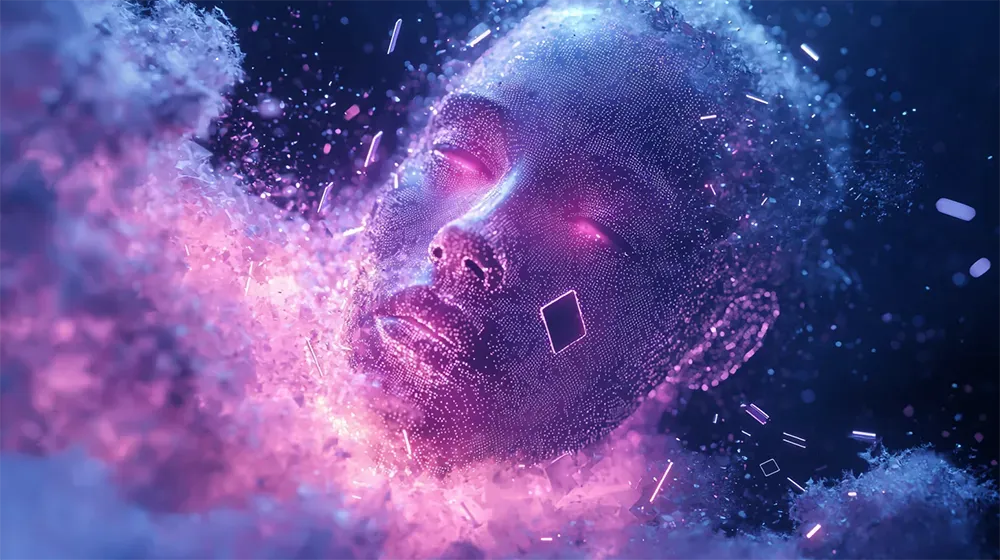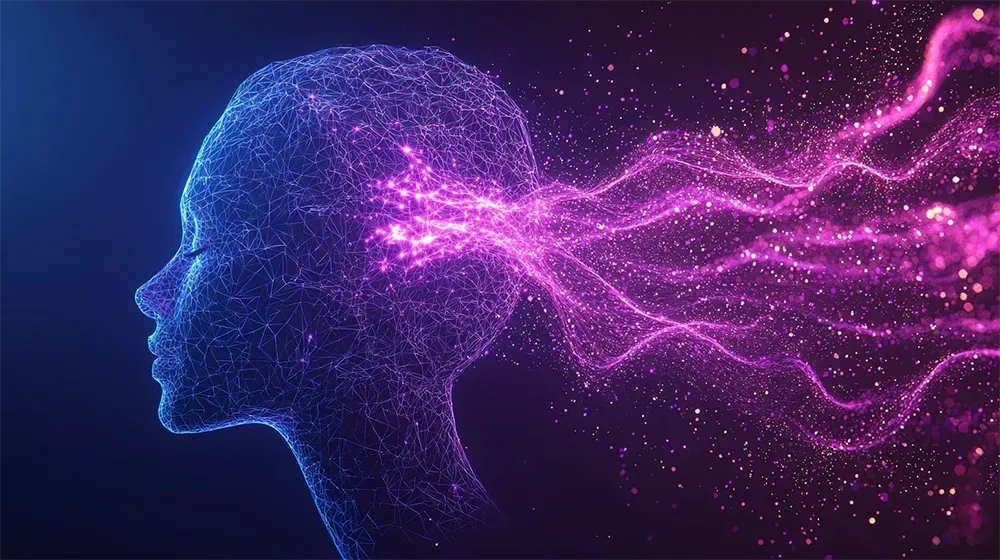Understanding Mixed Reality through an Innovation Speaker's Insights

Understanding Mixed Reality through an Innovation Speaker's Insights
Mixed reality has emerged as a revolutionary technology that is transforming the way we interact with digital content. Defined as the integration of virtual and augmented reality, mixed reality has opened up new possibilities in fields such as entertainment, education, healthcare, and more. In this article, we will delve into the concept of mixed reality and explore its potential applications through the unique lens of an innovation speaker.
Understanding the Concept of Mixed Reality
Before we can fully appreciate the impact of mixed reality, it's crucial to understand its fundamental concept. Mixed reality, also known as MR, blends elements of both virtual and augmented reality to create an immersive and interactive experience.
Virtual reality, or VR, transports users to a completely computer-generated environment, where they can explore and interact with a digital world. It provides a sense of presence and allows users to be fully immersed in a virtual environment, whether it's a fantastical landscape or a realistic simulation.
On the other hand, augmented reality, or AR, overlays digital content onto the real world. By using devices like smartphones or smart glasses, users can view and interact with virtual objects or information superimposed on their physical surroundings. AR enhances the real world by adding digital elements, such as 3D models, text, or animations, to provide additional context or information.
Mixed reality takes it a step further by merging these two realms seamlessly, allowing digital and physical elements to coexist and interact in real-time. This fusion of real and virtual worlds opens up a world of possibilities, where users can manipulate and engage with virtual objects within their natural surroundings.
Imagine a scenario where you can design and visualize a new building by physically walking through a virtual blueprint. With mixed reality, architects and designers can create virtual models of structures and explore them as if they were physically present, making it easier to assess and refine their designs.
Similarly, mixed reality can revolutionize the field of medicine. Medical professionals can learn complex procedures by interacting with holographic images that provide a detailed and interactive representation of the human body. Surgeons can practice intricate surgeries in a virtual environment, gaining valuable experience and reducing the risk of errors during actual procedures.
Moreover, mixed reality has the potential to transform the way we communicate and collaborate. Imagine attending a virtual meeting where participants from different parts of the world can interact as if they were in the same room. With mixed reality, remote collaboration becomes more immersive and engaging, as users can see and interact with each other's virtual avatars, share and manipulate virtual objects, and even annotate the real world with digital notes and drawings.
As mixed reality continues to evolve, its applications extend beyond entertainment and gaming. Industries such as education, architecture, healthcare, manufacturing, and retail are exploring the potential of mixed reality to enhance productivity, improve training and education, streamline design processes, and create unique and engaging customer experiences.
In conclusion, mixed reality is a powerful technology that merges the virtual and physical worlds, enabling users to interact with digital content in their real environment. By bridging the gap between the physical and digital realms, mixed reality opens up a world of possibilities, transforming industries and revolutionizing the way we learn, work, and collaborate.
Role of an Innovation Speaker in Decoding Mixed Reality
When it comes to deciphering complex technologies like mixed reality, having an innovation speaker onboard can provide valuable insights. An innovation speaker serves as a knowledgeable guide, helping us understand and navigate the intricacies of emerging technologies. Through their expertise and experience, they shed light on the practical implications and potential applications of mixed reality.
An innovation speaker not only explains the technical aspects of mixed reality but also explores its impact on various industries. They highlight how this technology can enhance productivity, improve user experiences, and drive innovation. Drawing upon real-world examples and case studies, an innovation speaker brings mixed reality to life, making it more relatable and understandable for audiences of all backgrounds.
Imagine attending a conference on the future of technology and being greeted by an innovation speaker who is an expert in mixed reality. As they take the stage, their passion for this cutting-edge technology is palpable. They start by delving into the history of mixed reality, tracing its roots back to early experiments in virtual reality and augmented reality. With each anecdote and historical reference, the audience becomes more engrossed in the topic.
The innovation speaker then moves on to explain the technical aspects of mixed reality, breaking down complex concepts into easily digestible pieces. They discuss the hardware and software components that make up a mixed reality system, emphasizing the importance of seamless integration and precise tracking. The audience is captivated as they learn about the sensors, cameras, and displays that enable the magic of mixed reality to happen.
But it's not just about the technology itself. The innovation speaker understands that the true value of mixed reality lies in its practical applications. They delve into various industries where mixed reality is already making waves, such as healthcare, education, and entertainment. The audience is amazed to learn how surgeons are using mixed reality to visualize complex procedures, how students are immersing themselves in virtual classrooms, and how gamers are experiencing a whole new level of immersion.
As the innovation speaker continues to share their knowledge, they bring in real-world examples and case studies that demonstrate the transformative power of mixed reality. They showcase how businesses are leveraging this technology to create innovative marketing campaigns, design immersive product experiences, and revolutionize customer interactions. The audience is inspired by these success stories and starts envisioning the endless possibilities that mixed reality can offer.
Throughout the presentation, the innovation speaker engages the audience with interactive demonstrations. They invite volunteers to experience mixed reality firsthand, allowing them to step into virtual worlds and interact with digital objects. The audience is in awe as they witness the seamless blending of the physical and digital realms, realizing the immense potential that mixed reality holds.
By the end of the session, the audience is not only well-informed about mixed reality but also inspired to explore its possibilities further. The innovation speaker has successfully decoded the complexities of this emerging technology, making it accessible and exciting for everyone in the room. They leave the audience with a sense of wonder and curiosity, eager to embrace the future of mixed reality.
Implementing Mixed Reality in Different Industries
The transformative nature of mixed reality is evident in its wide-ranging applications across industries. From gaming and entertainment to healthcare, education, manufacturing, and more, mixed reality has the potential to revolutionize the way we work, learn, and interact.
Let's take a closer look at how mixed reality is making an impact in various sectors:
- Gaming and Entertainment: In the gaming industry, mixed reality offers unparalleled immersion and interactivity. Players can step into virtual worlds and engage with digital characters and objects as if they were present in the real world. Imagine exploring ancient ruins, battling mythical creatures, or solving puzzles in a virtual environment that feels incredibly real. Entertainment experiences, such as concerts and live performances, can also be enhanced by integrating virtual elements into physical spaces, creating captivating and memorable experiences for the audience.
- Healthcare: Mixed reality has the potential to revolutionize the healthcare industry by enhancing training, diagnostics, and treatment. Surgeons can practice complex procedures in a realistic virtual environment, minimizing risks during surgery. Medical students can learn anatomy by interacting with three-dimensional holographic models, gaining a deeper understanding of the human body. Mixed reality also facilitates remote consultations, enabling doctors to diagnose and treat patients from a distance. Moreover, patients can benefit from mixed reality experiences that help alleviate pain, anxiety, and discomfort during medical procedures.
- Education: Traditional education methods can be enhanced using mixed reality. Students can gain a more immersive and interactive learning experience by visualizing complex concepts in three dimensions. For example, history lessons can be brought to life by virtually visiting historical sites or witnessing significant events. Science experiments can be conducted virtually to simulate hazardous or expensive scenarios, allowing students to learn without any real-world risks. Mixed reality has the potential to revolutionize education by making learning more engaging, impactful, and accessible to students of all backgrounds.
- Manufacturing: Mixed reality can streamline manufacturing processes by providing real-time guidance and assistance to workers. In an assembly line, workers can overlay virtual instructions onto physical objects, ensuring accurate and efficient production. Mixed reality also enables collaboration between remote teams, who can visualize and manipulate virtual prototypes to refine designs and identify potential issues before production. By integrating mixed reality into manufacturing, companies can improve productivity, reduce errors, and optimize workflows, ultimately leading to cost savings and increased customer satisfaction.
- Architecture and Design: Mixed reality is also transforming the architecture and design industry. Architects can create virtual models of buildings and spaces, allowing clients to experience and provide feedback on designs before construction begins. Interior designers can virtually place furniture and decor in a room, giving clients a realistic preview of the final look. This technology enables architects and designers to iterate quickly, saving time and resources while ensuring client satisfaction.
- Automotive: Mixed reality is revolutionizing the automotive industry by enhancing the design, manufacturing, and maintenance processes. Designers can visualize and modify vehicle designs in a virtual environment, improving aerodynamics, safety, and aesthetics. During manufacturing, mixed reality can assist assembly line workers by overlaying step-by-step instructions and highlighting potential errors. In the maintenance and repair phase, technicians can access real-time information and instructions through mixed reality devices, improving efficiency and reducing downtime.
As technology continues to advance, the potential applications of mixed reality will only expand further. From transforming the way we play games to revolutionizing healthcare, education, manufacturing, architecture, and automotive industries, mixed reality is reshaping our world in exciting and innovative ways.
Innovation Speaker's Approach to Mixed Reality Challenges
While the potential benefits of mixed reality are vast, it comes with its own set of challenges. Technological constraints, cost barriers, and user acceptance are some of the hurdles that need to be overcome for widespread adoption.
Here, the role of an innovation speaker becomes crucial in addressing these challenges. By providing valuable insights and perspectives, an innovation speaker helps organizations navigate the complexities of implementing mixed reality. They highlight practical solutions and best practices to mitigate challenges and ensure successful integration. Additionally, they can provide guidance on stakeholder engagement, change management, and identifying the right use cases to maximize the benefits of mixed reality.
Anticipating the Future of Mixed Reality
As mixed reality continues to evolve, the possibilities for its future are boundless. With advancements in hardware, software, and connectivity, we can expect more accessible, immersive, and seamless mixed reality experiences. The development of lightweight, user-friendly devices and improved tracking technologies will enable users to engage with mixed reality content effortlessly. Furthermore, the integration of artificial intelligence and machine learning will enhance the capabilities and personalization of mixed reality experiences.
From improved communication and collaboration to enhanced training and entertainment, mixed reality is set to revolutionize numerous aspects of our lives. Embracing mixed reality opens up the doors to a future where the virtual and physical worlds seamlessly merge, unlocking endless opportunities for innovation and growth.
Conclusion
In conclusion, mixed reality offers a paradigm shift in how we perceive and interact with digital content. Through an innovation speaker's insights, we can gain a deeper understanding of mixed reality and its potential applications across various industries. By bridging the gap between the physical and digital realms, mixed reality opens up new horizons for creativity, productivity, and engagement. As we anticipate the future of mixed reality, it is essential to embrace this transformative technology and explore its endless possibilities.
Frequently Asked Questions
1. What is mixed reality?
Mixed reality is the integration of virtual and augmented reality, blending elements of both to create an immersive and interactive experience. It allows digital and physical elements to coexist and interact in real-time.
2. How is mixed reality different from virtual reality and augmented reality?
Virtual reality (VR) transports users to a completely computer-generated environment, while augmented reality (AR) overlays digital content onto the real world. Mixed reality (MR) merges these two realms seamlessly, allowing digital and physical elements to coexist and interact.
3. What are some potential applications of mixed reality?
Mixed reality has a wide range of potential applications. It can revolutionize fields such as healthcare, education, architecture, gaming, entertainment, manufacturing, and more. Examples include virtual design and visualization in architecture, immersive medical training, and enhanced gaming experiences.
Contact Dr Mark van Rijmenam - Innovation Speaker for Your Event
After reading this comprehensive exploration of mixed reality and its transformative potential, wouldn't you like to delve even deeper? Dr Mark van Rijmenam, an expert innovation speaker, can bring this cutting-edge technology to life at your next event. With his extensive knowledge and charismatic delivery, he will captivate your audience, explaining the intricacies of mixed reality, its practical applications, and its immense potential for revolutionizing various industries. If you are ready to take your event to the next level and inspire your audience to embrace the future of mixed reality, complete the form below. We will be in touch within 24 hours to discuss how Dr van Rijmenam can make your event a truly innovative and memorable experience.
Thanks for your inquiry
We have sent you a copy of your request and we will be in touch within 24 hours on business days.
If you do not receive an email from us by then, please check your spam mailbox and whitelist email addresses from @thedigitalspeaker.com.
In the meantime, feel free to learn more about The Digital Speaker here.
Or read The Digital Speaker's latest articles here.





